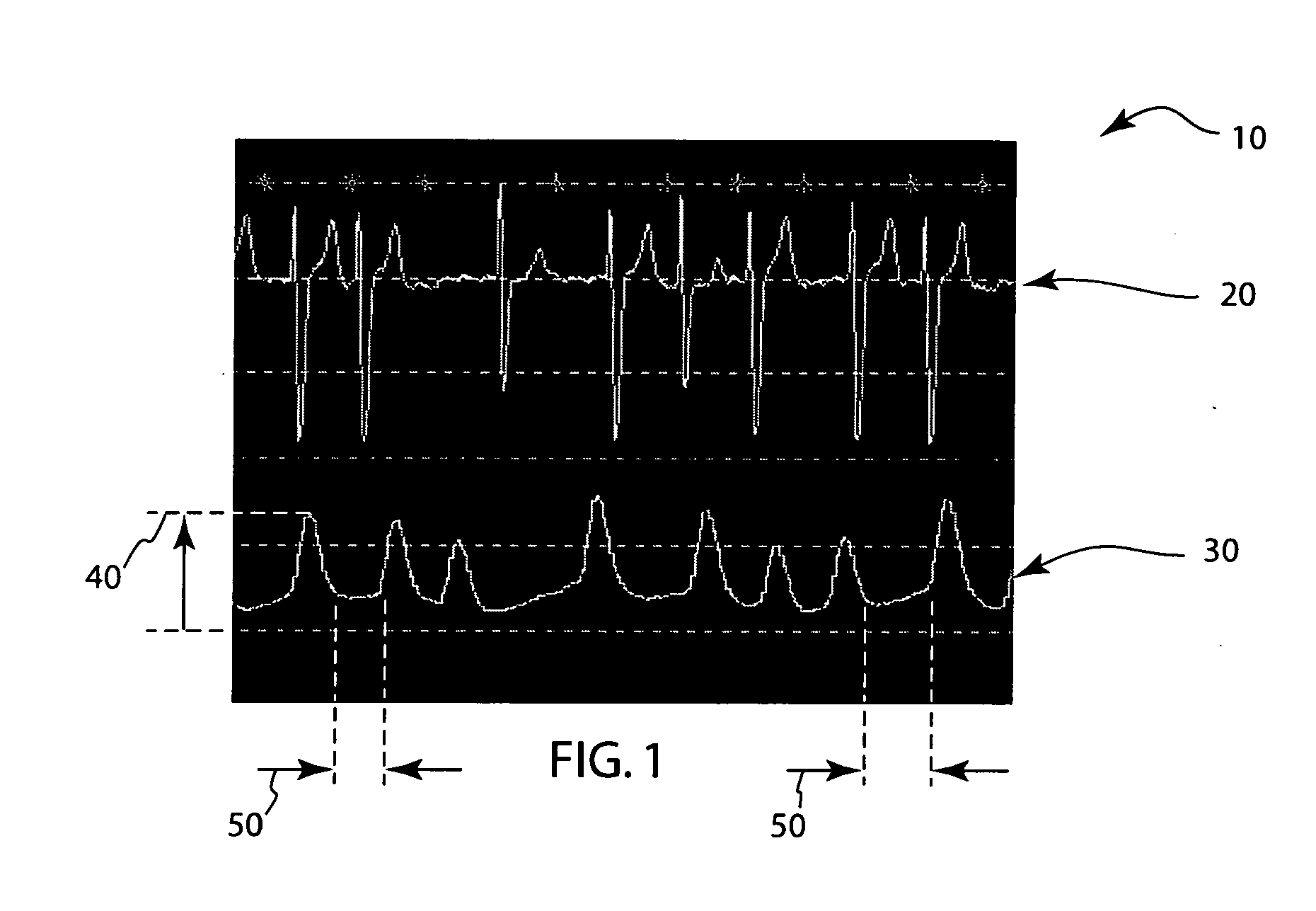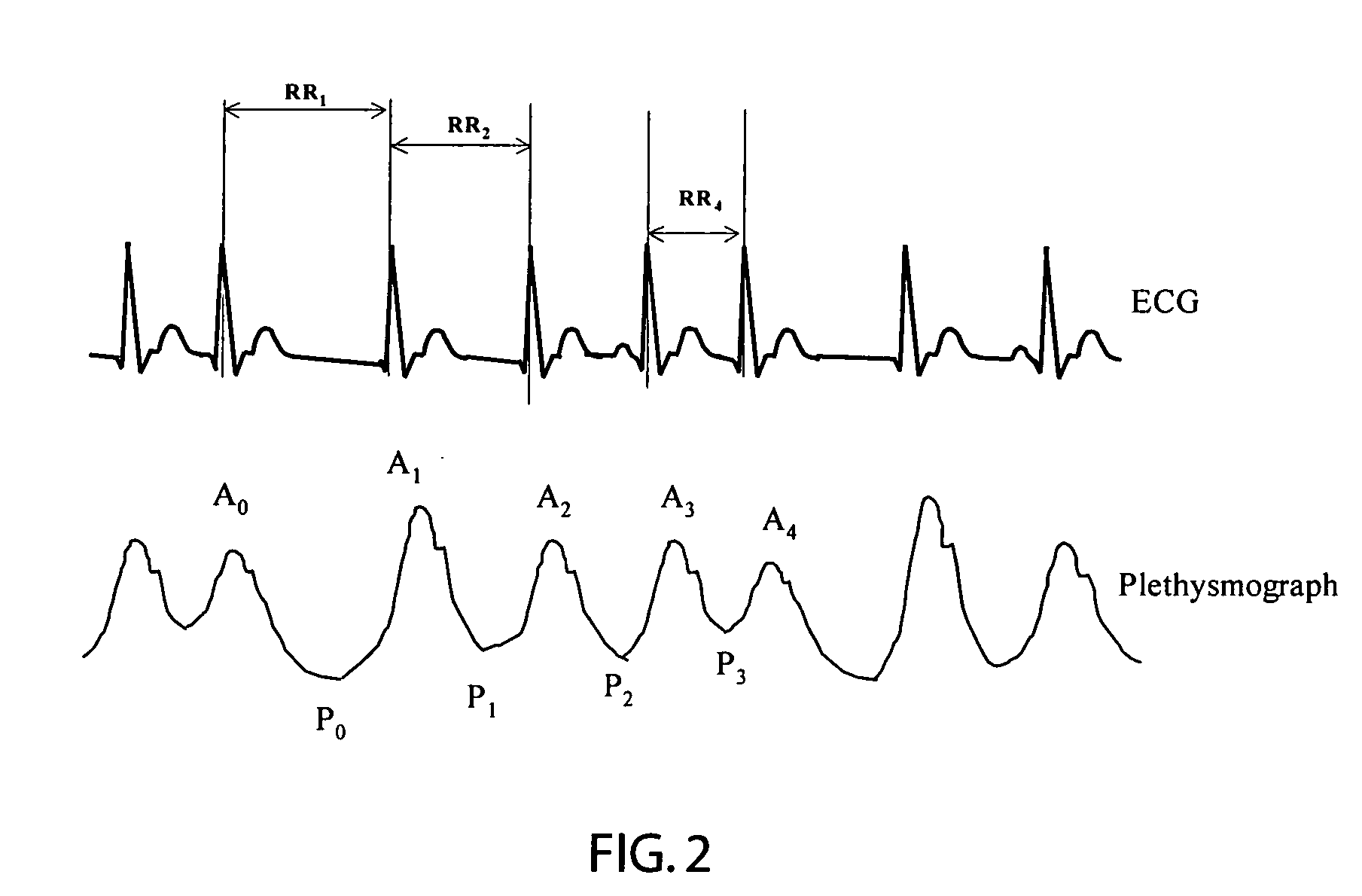Atrial fibrillation detection using SPO2
- Summary
- Abstract
- Description
- Claims
- Application Information
AI Technical Summary
Benefits of technology
Problems solved by technology
Method used
Image
Examples
Embodiment Construction
[0018]FIG. 1 illustrates an ECG waveform 20 and a plethysmographic waveform 30. Typically, a physician or healthcare provider will detect and diagnose AFIB in a patient using the ECG waveform 20. However, as discussed above, obtaining an ECG waveform 20 from a patient is much more complex and difficult then obtaining a plethysmographic waveform 30 from a patient. As will be discussed below, in order to detect AFIB using the plethysmographic waveform 30, a number of aspects of the plethysmographic waveform 30 will be examined. A pulse detection will be utilized and the pulse intervals analyzed using a Hidden Markov Model (HMM) method and a contextual analysis. Also, the amplitude 40 of each pulse will be measured and analyzed, as well as the ventricular filling time 50 between each pulse of the plethysmographic waveform. The present invention will allow for a more simplistic and convenient method to detect AFIB using a patient's plethysmographic waveform 30. Of course, this will grea...
PUM
 Login to View More
Login to View More Abstract
Description
Claims
Application Information
 Login to View More
Login to View More - R&D
- Intellectual Property
- Life Sciences
- Materials
- Tech Scout
- Unparalleled Data Quality
- Higher Quality Content
- 60% Fewer Hallucinations
Browse by: Latest US Patents, China's latest patents, Technical Efficacy Thesaurus, Application Domain, Technology Topic, Popular Technical Reports.
© 2025 PatSnap. All rights reserved.Legal|Privacy policy|Modern Slavery Act Transparency Statement|Sitemap|About US| Contact US: help@patsnap.com



